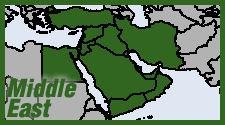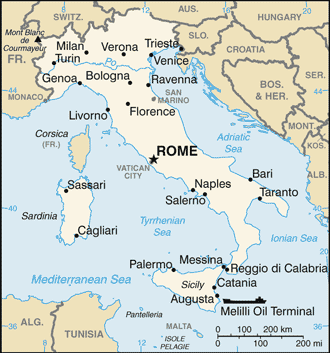 Egypt's Ahram Online reports March 2 that Abdullah Mohamed Morsi—the son of ousted president Mohamed Morsi of the ultra-conservative Muslim Brotherhood—was arrested for possession of hashish. The young Morsi and a friend were detained at a security checkpoint in the Nile Delta's Obour City, Qalyubia governorate, where officials say they found two "joints of hashish" (presumably hash-laced tobacco) in their car. The two were released after they agreed to give blood and urine samples, which could result in their conviction. Abdullah's brother, Osama Morsi, condemned the arrest on his Facebook page, asserting the claim of drug possession is being used to "taint the image of honest people."
Egypt's Ahram Online reports March 2 that Abdullah Mohamed Morsi—the son of ousted president Mohamed Morsi of the ultra-conservative Muslim Brotherhood—was arrested for possession of hashish. The young Morsi and a friend were detained at a security checkpoint in the Nile Delta's Obour City, Qalyubia governorate, where officials say they found two "joints of hashish" (presumably hash-laced tobacco) in their car. The two were released after they agreed to give blood and urine samples, which could result in their conviction. Abdullah's brother, Osama Morsi, condemned the arrest on his Facebook page, asserting the claim of drug possession is being used to "taint the image of honest people."

 Mexican authorities on Feb. 22 announced the arrest of the country's top drug lord, the notorios Joaquin Guzmán Loera AKA "El Chapo" (Shorty)—who had
Mexican authorities on Feb. 22 announced the arrest of the country's top drug lord, the notorios Joaquin Guzmán Loera AKA "El Chapo" (Shorty)—who had  Medical marijuana advocates are applauding a new memorandum (
Medical marijuana advocates are applauding a new memorandum ( Italy's
Italy's  At least two people were shot dead Feb. 12 in student protests in the Venezuelan capital, Caracas. An anti-government protester and a pro-government activist were each killed in an exchange of fire as rival demonstrators clashed, officials said. "He was a comrade assassinated by the right-wing fascist hordes," National Assembly leader
At least two people were shot dead Feb. 12 in student protests in the Venezuelan capital, Caracas. An anti-government protester and a pro-government activist were each killed in an exchange of fire as rival demonstrators clashed, officials said. "He was a comrade assassinated by the right-wing fascist hordes," National Assembly leader  Eighteen members of Congress joined together Feb. 12 in calling on President
Eighteen members of Congress joined together Feb. 12 in calling on President 





Recent comments
2 weeks 6 days ago
6 weeks 5 days ago
10 weeks 5 days ago
11 weeks 3 days ago
21 weeks 3 days ago
25 weeks 4 days ago
26 weeks 4 days ago
26 weeks 4 days ago
47 weeks 5 days ago
51 weeks 6 days ago